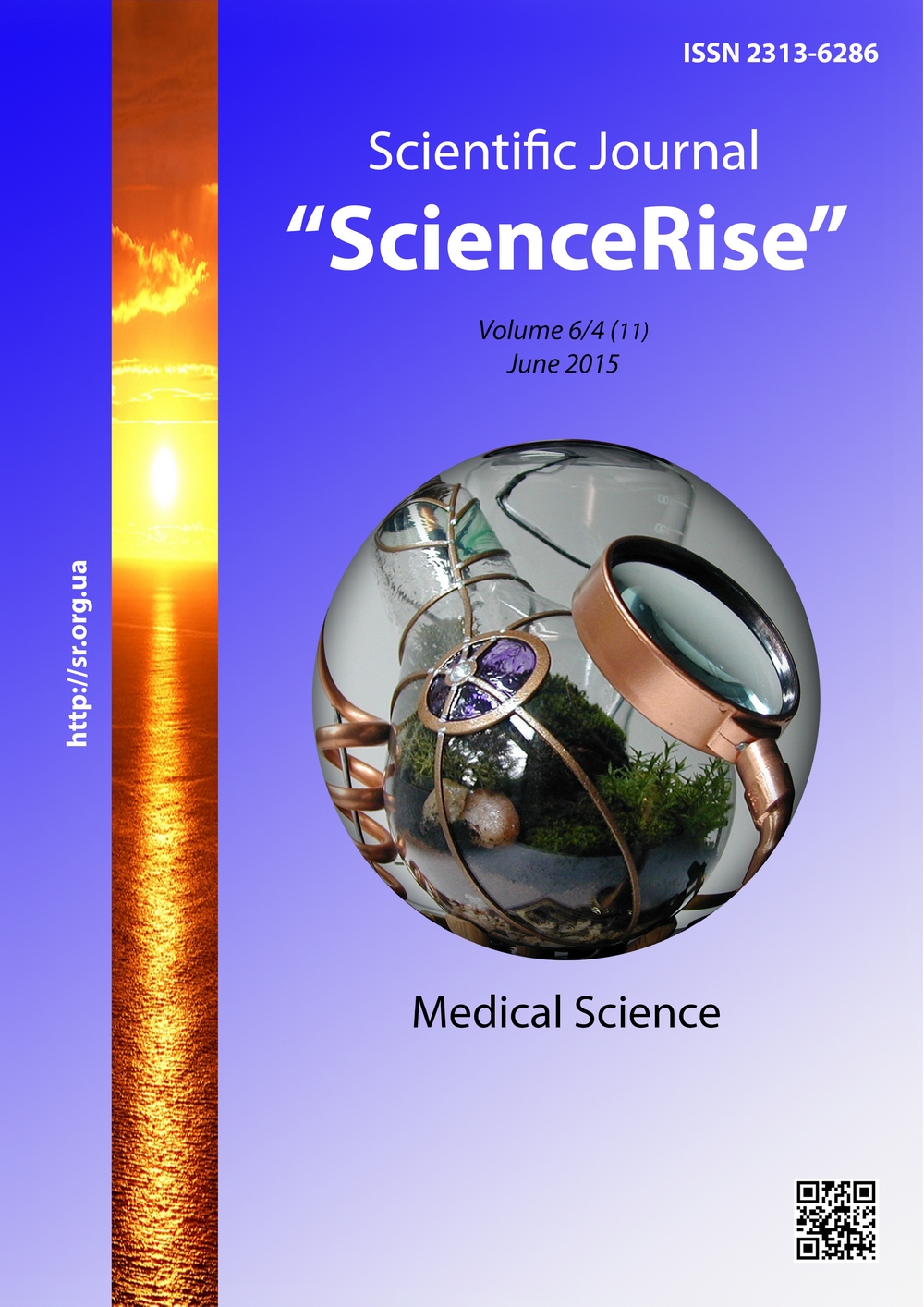Peculiarities of adaptive and compensatory abilities of the modern pupils
DOI:
https://doi.org/10.15587/2313-8416.2015.45311Keywords:
pupils, level of health, adaptive and compensatory mechanismsAbstract
In conditions of an intense functioning of child organism an influence of unfavorable factors can result into breakdown of adaptive and compensatory mechanisms and to become a presupposition for forming pathology.
Aim: to define peculiarities of adaptive and compensatory abilities of school-aged children during the school year.
Methods. 970 children 9-17 years old were examined at the beginning and at the end of school year. Children were divided in 2 groups: I – 673 children with chronic somatic diseases, II – 297 conventionally healthy children.
The study of adaptive and compensatory mechanisms was carried out with a glance to vegetative regulation of body functions. Robinson index (IR) was used for an express-assessment of somatic health. Statistic data-processing was done according to the requirements of evidence-based medicine.
Result. An analysis of an examination results at the beginning of the school year showed that the pupils of the I group have a complex disturbances of vegetative regulation, low level of aerobic abilities of organism. Among the children of the II group no more than 25% have a satisfactory state of adaptive and compensatory mechanisms that ensure an adequate response of child organism on the stress factors of educational process.
At the end of the school year the part of children who have a balanced level of neuroreflex systems of organism decreases by 50%, the number of children with an overstrain of regulatory systems of organism increases by 28%, with unsatisfactory state of adaptive and compensatory mechanisms – by 22% that becomes presupposition for formation and chronization of somatic pathology.
An examination of pupils health level at the end of the school year showed that the number of conventionally healthy children decreases by 19,2%. The syntropy of pathological states formed in 54,2% of pupils with chronic somatic pathology, in 34,5% of children the functional disturbance transformed into somatic pathology.
Conclusion. The definition of indicators of the state of adaptive and compensatory mechanisms and energy potential of organism when medical examination of the school-aged children allows to distinguish the risk group on the subject of formation and chronization pathology opportunely and to carry out prophylactic
References
Gromadske zdorov'ya v Ukrayini. Deyaki statystychni pokaznyky za 2013 rik (2013). Zdorov'ya Ukrayiny, 2, 6–7.
Peresypkina, T. V. (2014). Dynamika stanu zdorov'ya pidlitkiv Ukrayiny. Zdorove rebenka, 1 (52), 12–15.
Makarova, L. P., Solovyev, A. V., Siromyatnykova, L. Y. (2013). Aktualnue problemu formyrovanyya zdorovya shkolnykov. Molodoj uchenuj, 12, 494–496.
Tuljakova, O. V. (2014). Sostojanie zdorov'ja, fizicheskoe i psihicheskoe razvitie detej v zavisimosti ot razlichnih faktorov. Saratov, 332.
Baranov, A. A., Shheplyagynii, L. A. (Eds.) (2012). Ocenka fyzycheskogo razvytyya y sostoyanyya zdorovya detej y podrostkov. Moscow: Sfera; (pererabot), 68.
Domrachev, A. A. (2010). Metodologycheskyj podxod k ocenke funkcyonalnogo sostoyanyya organyzma po stepeny utomlenyya. Fyzyologyya cheloveka, 36 (1), 106–111.
Baevskyj, P. M., Yvanov, G. G., Chyrepkych, L. V. (2002). Analyz varyabelnosty serdechnogo rytma pry yspolzovanyy razlychnuch elektrokardyografycheskych system: metodycheskye rekomendacyy. Moscow, 53.
Apanasenko, G. L., Naumenko, G. G., Sokolovecz, T. N. (1998). Ob ocenke sostoyanyya zdorovya cheloveka. Vrachebnoe delo, 5, 112–114.
Downloads
Published
Issue
Section
License
Copyright (c) 2015 Тетяна Володимирівна Фролова, Ольга Володимирівна Охапкіна, Ірина Резівна Сіняєва, Ірина Іванівна Терещенкова, Наталія Федорівна Cтенкова, Олена Володимирівна Атаманова

This work is licensed under a Creative Commons Attribution 4.0 International License.
Our journal abides by the Creative Commons CC BY copyright rights and permissions for open access journals.
Authors, who are published in this journal, agree to the following conditions:
1. The authors reserve the right to authorship of the work and pass the first publication right of this work to the journal under the terms of a Creative Commons CC BY, which allows others to freely distribute the published research with the obligatory reference to the authors of the original work and the first publication of the work in this journal.
2. The authors have the right to conclude separate supplement agreements that relate to non-exclusive work distribution in the form in which it has been published by the journal (for example, to upload the work to the online storage of the journal or publish it as part of a monograph), provided that the reference to the first publication of the work in this journal is included.

